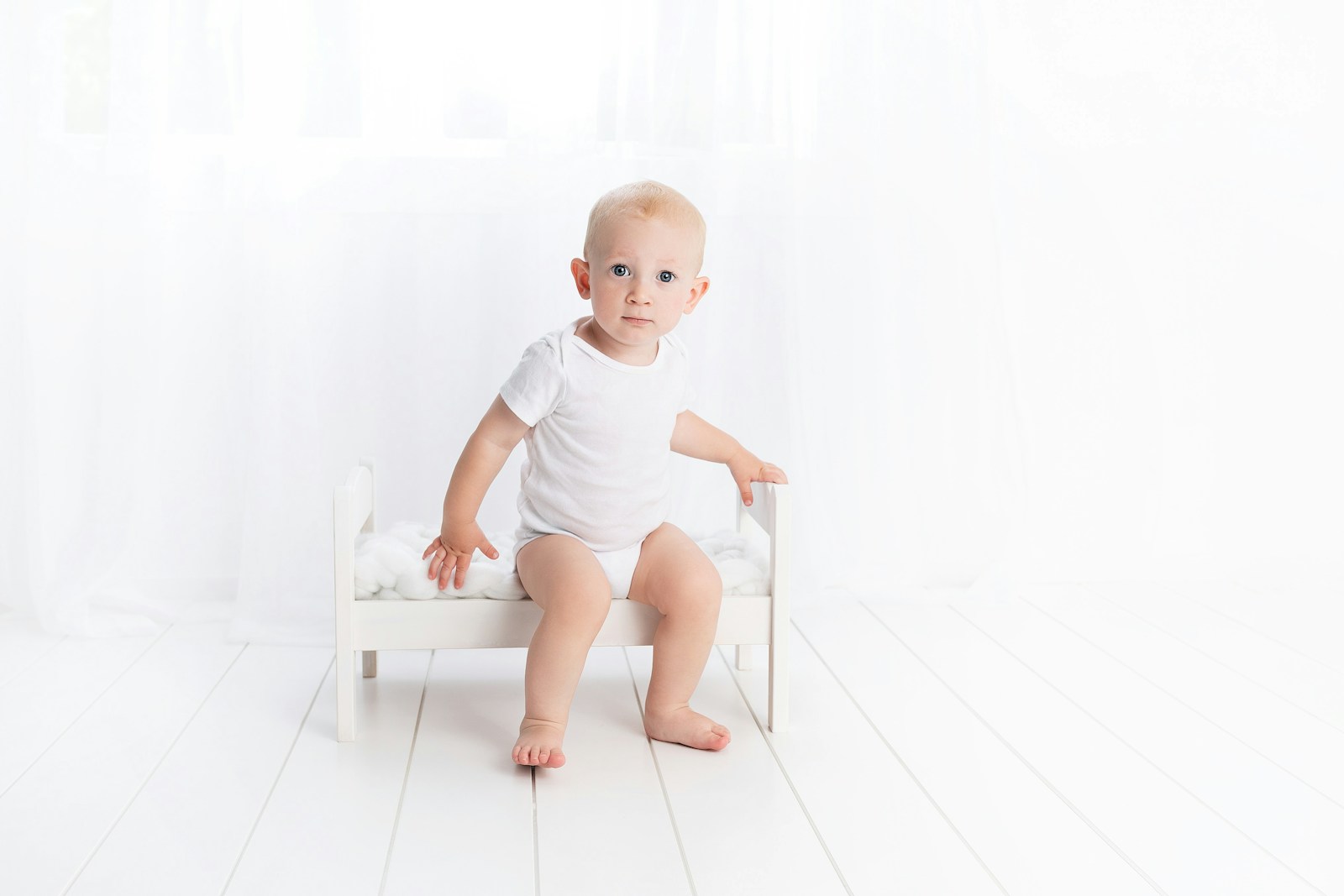Potty training is a significant milestone in a child’s development, and while it can be challenging for any child, it may present additional hurdles for children with developmental delays. These children often face unique challenges, including delays in communication, motor skills, or understanding routines, which can affect their ability to successfully master potty training. However, with the right strategies and support, children with developmental delays can achieve toilet independence at their own pace.
This article outlines the best strategies for potty training children with developmental delays, offering practical tips and techniques to make the process smoother and more successful for both the child and their caregivers.
1. Understanding the Challenges of Potty Training for Children with Developmental Delays
Common Challenges in Potty Training
Children with developmental delays may face several challenges that impact their ability to learn potty training skills, including:
- Delayed Communication Skills: Many children with developmental delays struggle to communicate their need to use the bathroom, making it difficult for them to express when they are ready to go.
- Motor Skills Deficits: Motor delays can affect a child’s ability to undress, sit on the toilet, or clean themselves after using the bathroom.
- Sensory Processing Issues: Some children with developmental delays experience sensory processing difficulties, which can make the sensation of using the toilet uncomfortable or overwhelming.
- Behavioral and Cognitive Delays: Children with cognitive or behavioral delays may have difficulty understanding the steps involved in toilet training, following a consistent routine, or staying focused on the task.
Understanding these challenges helps parents and caregivers develop tailored strategies to support their child’s individual needs throughout the toilet training process.
2. Preparing for Successful Potty Training
Assessing Readiness
Toilet training readiness for children with developmental delays may not occur at the same age as it does for typically developing children, and parents should focus on their child’s developmental progress rather than chronological age. Look for signs of readiness that include:
- Awareness of Wetness or Soiling: If your child begins to show discomfort when wet or soiled, or indicates that they need a diaper change, they may be ready to begin toilet training.
- Physical Control: Your child should demonstrate some control over their bladder and bowel movements. For example, having dry periods of at least two hours or waking up dry after naps are positive indicators of readiness.
- Ability to Follow Simple Directions: Your child should be able to follow simple instructions, such as “pull down your pants” or “sit on the toilet.”
- Interest in Toileting: A child showing curiosity about bathroom routines, such as watching others use the toilet or wanting to sit on the toilet, may be ready for training.
Creating a Supportive Environment
Setting up a supportive and consistent environment for toilet training is essential, especially for children with developmental delays. Make sure the bathroom is accessible, comfortable, and designed to reduce anxiety or sensory sensitivities. Some practical tips include:
- Use Adaptive Equipment: If your child has difficulty with balance or coordination, consider using adaptive equipment, such as a potty chair, toilet seat insert, or step stool to make it easier for them to sit securely and comfortably on the toilet.
- Visual Schedules: For children who struggle with understanding routines, creating a visual schedule of the toilet training process can help. Use pictures or symbols to show the steps, such as “pull down pants,” “sit on the toilet,” “flush,” and “wash hands.” Visual aids can provide clarity and reduce confusion.
- Minimize Distractions: Keep the bathroom environment calm and free from distractions, especially if your child has sensory sensitivities. Dim lighting, quiet surroundings, or sensory-friendly textures can help make the bathroom a more comfortable space for them.
3. Tailored Potty Training Strategies
Establishing a Consistent Routine
Routine and repetition are key when toilet training any child, and they are especially important for children with developmental delays. Establish a predictable toileting schedule that aligns with your child’s natural body rhythms. Take your child to the bathroom at regular intervals, such as every two hours or after meals and naps, to create a sense of routine.
- Cueing Your Child: Use clear verbal cues, such as “It’s time to go potty,” along with visual reminders, such as pointing to a picture of a toilet, to signal when it’s time to use the bathroom.
- Offer Regular Bathroom Trips: Encourage your child to sit on the toilet at scheduled times, even if they don’t always go. Regular practice helps them build familiarity with the process and reinforces the routine.
Use Positive Reinforcement
Children with developmental delays respond well to positive reinforcement, and rewards can motivate them to stay engaged in the toilet training process. Be sure to use praise, rewards, or a token system that acknowledges their effort, even if the result isn’t perfect.
- Praise and Encouragement: Offer specific praise for desired behaviors, such as sitting on the toilet, trying to use the bathroom, or telling you when they need to go. A simple “Great job sitting on the potty!” can go a long way in boosting their confidence.
- Reward System: You can also use a reward system, such as a sticker chart, where your child earns a sticker for every successful bathroom trip. After collecting a certain number of stickers, they can earn a small prize or special treat.
Incorporate Visual and Auditory Cues
Visual and auditory cues can help children with developmental delays better understand the toileting process. Visual cues, such as pictures of each step in the bathroom routine, can provide guidance for children who struggle with verbal instructions.
- Timers or Alarms: Using a timer or alarm to remind your child when it’s time to go to the bathroom can help build independence. Setting an alarm every two hours can serve as a gentle reminder for the child to attempt using the toilet.
- Social Stories: Social stories are short, personalized stories that help children understand social situations, including toilet training. You can create a simple social story that explains why and how to use the toilet in a step-by-step, reassuring way. Include pictures and text that explain the process in a positive and encouraging tone.
Gradual Transition from Diapers
Some children with developmental delays may need extra time to transition from diapers to underwear. Start by introducing pull-up diapers, which allow the child to experience the sensation of pulling their pants up and down, a key skill for toilet training.
- Daytime Training First: Focus on daytime toilet training before addressing nighttime dryness, as children often achieve daytime control before they are able to stay dry at night.
- Introduce Underwear Gradually: Once your child is consistently using the toilet during the day, gradually introduce underwear. Let your child pick out their favorite underwear to build excitement and encourage them to wear it.
4. Addressing Sensory Challenges
Sensory-Friendly Toileting
Children with sensory processing difficulties may find aspects of toileting uncomfortable or overwhelming. These children may be sensitive to the sound of flushing, the feeling of sitting on a hard toilet seat, or the sensation of water or toilet paper. Addressing these sensory challenges can make the toilet training process more comfortable for the child.
- Modify the Environment: For children sensitive to sound, allow them to leave the bathroom before flushing the toilet. You can also try using a padded toilet seat to make sitting more comfortable or provide soft wipes instead of traditional toilet paper for children sensitive to textures.
- Offer Alternatives: Some children with sensory sensitivities may prefer to use a small potty chair instead of the regular toilet. This allows them to feel more secure and grounded, especially if they have difficulty with balance.
Introduce Sensory Play for Comfort
Introducing sensory play into the bathroom routine can help children with sensory challenges associate toileting with positive experiences. For example, play with water outside of the bathroom to help the child become more comfortable with the sensation of water, or use toys that mimic bathroom routines, such as dolls with miniature toilets, to reduce anxiety.
5. Patience and Flexibility in the Process
Be Patient and Avoid Pressure
Toilet training can take longer for children with developmental delays, and progress may not always be linear. It’s important to be patient and avoid putting pressure on the child. Forcing or rushing the process can lead to increased anxiety or resistance, making the child less willing to participate.
- Acknowledge Small Wins: Celebrate every small achievement, whether it’s sitting on the toilet, communicating the need to use the bathroom, or staying dry for short periods. These milestones build toward eventual success.
- Expect Setbacks: It’s common for children to experience setbacks during toilet training, especially if they are dealing with developmental delays. If accidents occur, remain calm and reassuring, and avoid punitive responses. Reinforce the routine and continue providing encouragement.
Individualize the Approach
Every child is unique, and what works for one child may not work for another. It’s essential to individualize the toilet training process based on your child’s specific developmental needs, preferences, and challenges. If one approach doesn’t work, be willing to adjust the strategy and try a different method.
6. Seek Professional Support When Needed
Consult with a Specialist
If your child is struggling with toilet training despite consistent efforts, consider consulting with a developmental specialist, occupational therapist, or behavioral therapist. These professionals can offer tailored strategies and tools based on your child’s specific needs and provide guidance to both parents and children.
Collaborate with Schools and Care Providers
For children who attend daycare, preschool, or school, it’s important to collaborate with teachers and care providers to ensure consistency in toilet training across environments. Share your child’s toilet training plan with school staff so they can support the process during the school day.
Conclusion
Toilet training children with developmental delays requires patience, understanding, and a tailored approach that meets the child’s specific needs. By using strategies such as creating a consistent routine, incorporating multisensory learning, using positive reinforcement, and addressing sensory sensitivities, parents and caregivers can make the toilet training process smoother for children with developmental delays. Flexibility, patience, and celebrating small milestones are key to supporting your child’s progress without causing additional stress or frustration.
For some children, it may take longer to master toilet training, and occasional setbacks are normal. It’s essential to remain positive and supportive, avoiding any pressure or punishment if the process takes more time than expected. Remember that every child develops at their own pace, and the goal is to make the experience as comfortable and successful as possible.
If you find that toilet training remains particularly challenging, don’t hesitate to seek professional help. Developmental specialists, occupational therapists, and behavior therapists can offer personalized strategies and interventions that address your child’s unique challenges. With the right approach and ongoing support, children with developmental delays can achieve independence in toilet training, fostering their confidence and self-reliance.




